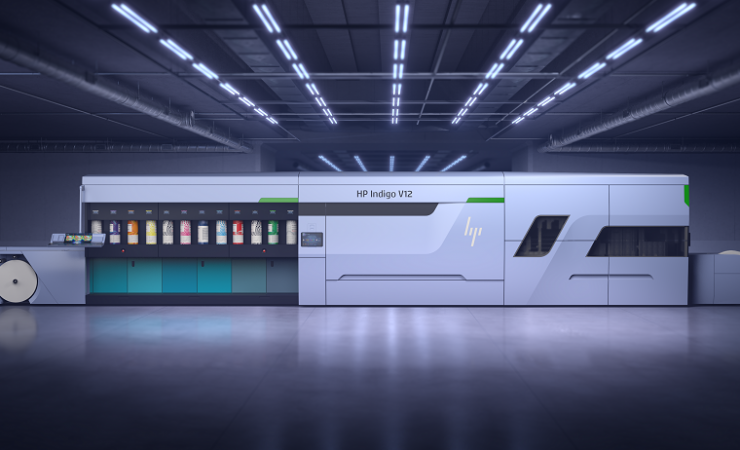Digital press manufacturer HP Indigo is seeking to shift the default position of the industry from an ‘analogue first’ mindset, to one where digital printing is the predominant option.
This will be facilitated by the next generation of digital printing technology, namely the forthcoming V12, and that which741 is able to fully bridge the gap between short run, high margin jobs and the long runs that remain the preserve of conventional press technology.
According to Elad Zmora, product manager for HP Indigo’s high productivity label presses, the majority of the volume of pressure-sensitive label work sits between 1500m up to 15,000 linear metres. Whilst the company’s existing portfolio of label presses have provided a viable option to take on an ever-increasing amount and variety of that work, the next generation of digital presses will be geared up to deliver the level of productivity, quality, stability and profitability that the printers and converters of tomorrow will require to process more challenging and robust jobs.
‘The concept to deliver agility across the supply chain prevails, and digital is no longer just about providing a solution for jobs that are not economical to run on a flexo or web offset press. The reality is that converters who have the ability to run jobs digitally can take on more jobs, deliver a faster turnaround, achieve a higher value per square metre printed, and increase their gross margins.
‘The motivation to move to digital is clear, although the majority of work continues to be run down analogue presses. We want to change that, and it starts with a change in mindset. Rather than seeing a digital press as a tool to take away short-run jobs and free up a flexo press for longer runs, we want it to be seen as a way to open a business up to a more profitable way of working and efficient way of growing.’
V12 is to be the next generation of HP Indigo digital press, using its LEPx platform and inline print architecture to deliver printing speeds up to 120m/min, making it a viable proposition to take a bigger share of the market for medium and long runs and drive this change in mindset.
‘The HP Indigo 6800/6900 and 6K have served as great products to allow digital to grow its presence in the market, whilst the HP Indigo 8000 allowed the technology to push further into medium length runs,’ commented Mr Zmora. ‘The HP Indigo 20000/25K opened the technology up to larger labels, shrink sleeves and flexible packaging.
‘V12 opens the technology up again to even more jobs and opportunities, specifically taking work off of flexo and web offset presses, and allowing them to be manufactured in a profitable and efficient way that only digital can truly deliver.’
To further this, HP is collaborating with supply chain partners, such as A B Graphic (ABG) to ensure the ecosystem around the press can match the company’s expectations. The company is also working closely with those developing MIS and workflow systems.
‘A press platform only ever tells part of the story,’ opines Mr Zmora. ‘To reach our goal, we know that workflow will become dramatically important. The efficiencies that can be hidden by the time it takes to set a job up to run on a flexo press will be exposed by digital, where the set-up time can be in single-digit numbers. This means the systems and tools to get jobs ready and lined up to print must be cutting-edge and highly efficient, and likely automated. They must also be available to printers of all sizes and capabilities, so that they may take advantage of the opportunities a digital first mindset can bring.’




